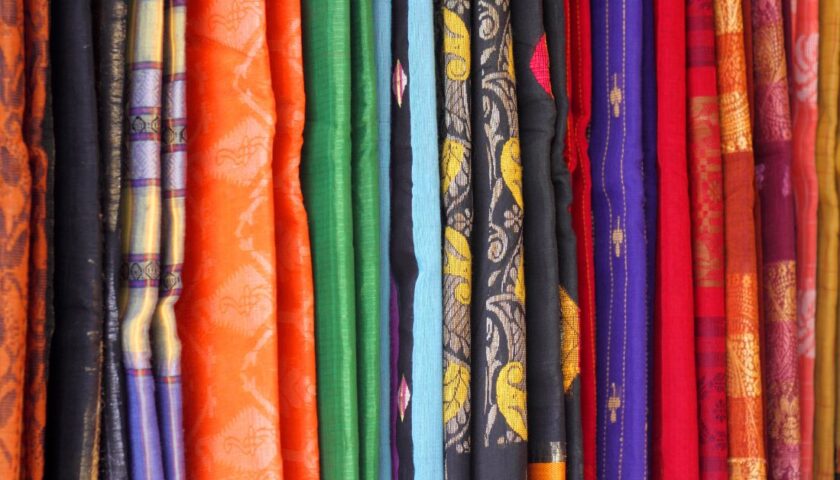
Sarees are one of the most popular traditional clothing items worn by women throughout India and parts of South Asia. The saree is made up of various fabrics, each with its own unique qualities and characteristics. From silks to cottons to georgettes, there’s a wide variety of materials used to make sarees. In this article, we’ll explore the different types of fabrics used in making sarees and how they differ from one another. We’ll also discuss the advantages and disadvantages of each type so you can choose the best fabric for your next saree purchase.
Different types of saree fabrics
Sarees are traditionally made from a variety of different fabrics, each with its own unique characteristics. The most common saree fabrics are silk, cotton, and polyester.
Silk is the most popular fabric for sarees, as it is soft and has a luxurious feel. It is also known for its strong and durable properties, making it ideal for everyday wear. Cotton sarees are also popular, as they are comfortable and breathable. Polyester sarees are less common, but they are often cheaper than silk or cotton sarees.
Pros and cons of different saree fabrics
Different saree fabrics have different pros and cons. Here is a brief overview of some of the most popular saree fabrics, to help you choose the right one for you:
1. Cotton sarees are light and comfortable, making them ideal for warm weather. They are also relatively inexpensive. However, cotton sarees can wrinkle easily and may require special care when washing.
2. Silk sarees are luxurious and elegant, but can be quite expensive. They are also delicate and require careful handling.
3. Synthetic sarees are usually less expensive than silk sarees, and they are easier to care for. However, they may not be as comfortable to wear in hot weather, as they can trap heat more easily than natural fabrics.
4. Georgette sarees are perfect choice for summers and spring season because of the breathable property and easy to handle while caring and storing. However, embellished sarees in georgette fabrics requires delicate cleaning such as dry cleaning and proper storage.
5. Linen sarees are light and airy, making them ideal for warm weather wear. They can wrinkle easily, however, so they may require special care when packing or storing them.
Which saree fabric is best for which occasion?
Different saree fabrics are used for different occasions. The most common fabrics used for sarees are silk, cotton, and polyester.
Silk is the most expensive and luxurious fabric used for sarees. It is perfect for special occasions like weddings and parties. Silk sarees are also considered to be very lucky and are often gifted to new brides.
Cotton is a more casual fabric than silk and is usually used for everyday wear. Cotton sarees are comfortable and breathable, making them ideal for hot weather conditions.
Polyester is a synthetic fabric that is less expensive than silk or cotton. Polyester sarees are often brightly coloured and can be decorated with sequins or other embellishments. They are perfect for festivals and other special occasions.
How to care for different types of saree fabrics
Different saree fabrics require different levels of care. For example, a silk saree should be dry-cleaned, while a cotton saree can be machine or hand washed. Here is a guide to caring for different types of saree fabrics:
Silk: Silk is a delicate fabric and should be dry-cleaned. If you must wash a silk saree at home, do so by hand in cool water with a mild detergent. Hang the saree to dry in the shade, and iron it on the lowest setting when it is slightly damp.
Cotton: Cotton is a sturdy fabric that can be machine-washed. However, if your saree has intricate embroidery or embellishments, it is best to hand-wash it or have it dry-cleaned to avoid damage. Machine-wash cotton sarees on a gentle cycle in cool water with a mild detergent, and hang them to dry in the shade. Iron them on the highest setting when they are completely dry.
Linen: Linen is a strong fabric that can be machine-washed. However, like cotton, if your linen saree has intricate details, it is best to hand-wash it or have it dry-cleaned. Machine-wash linen sarees on a gentle cycle in cool water with a mild detergent, and hang them to dry in the shade. Iron them on the highest setting when they are completely dry.
Crepe: Crepe is a synthetic fabric generally worn in all seasons. It needs dry cleaning, as washing it at home might damage the fabric. However, in some cases it can be washed by hand in cold water. Do not wring crepe sarees to avod fabric damage.
Conclusion
Sarees are one of the most popular clothing items in India and have been worn for centuries in both traditional and casual events. Women in India adorn sarees as a pride and part of their cultural values and rituals. Over time, different fabrics have been used to make sarees. These fabrics include cotton, silk, satin, georgette, crepe and chiffon. Each fabric has its own unique properties and drapes differently when worn. Some are rich in textures and feel while some are made to make you feel relaxed and comfortable.
The post Unleash the Beauty of Sarees: A Comprehensive Guide to the Various Fabrics Used appeared first on FashioNectar.
